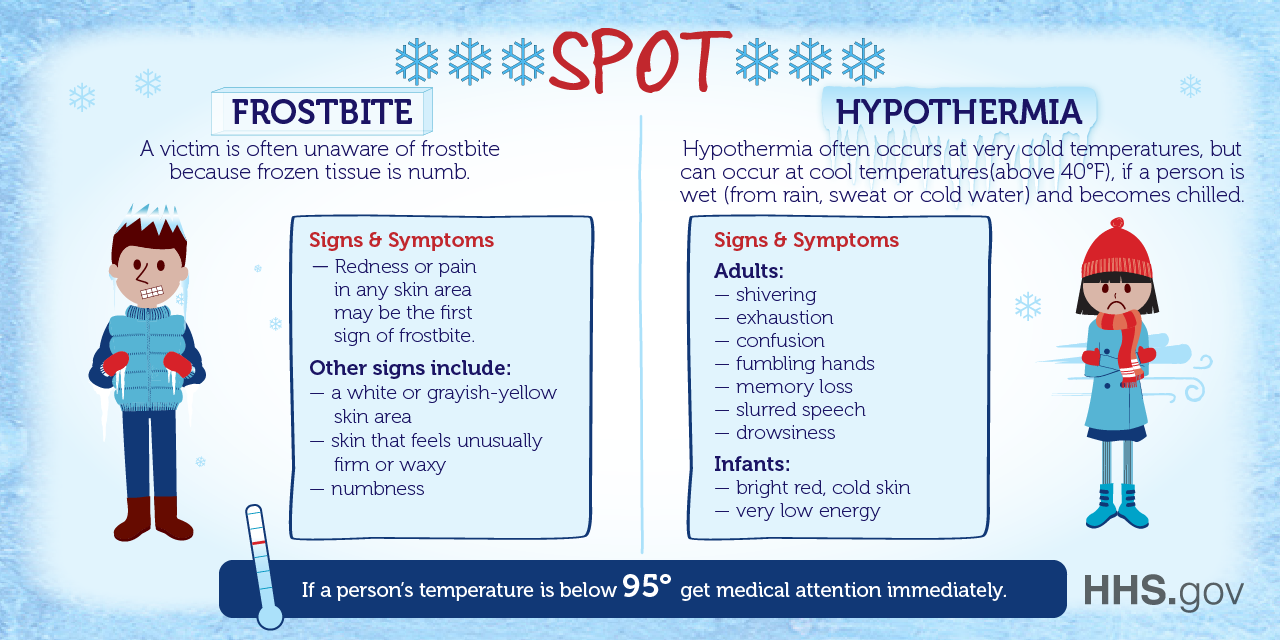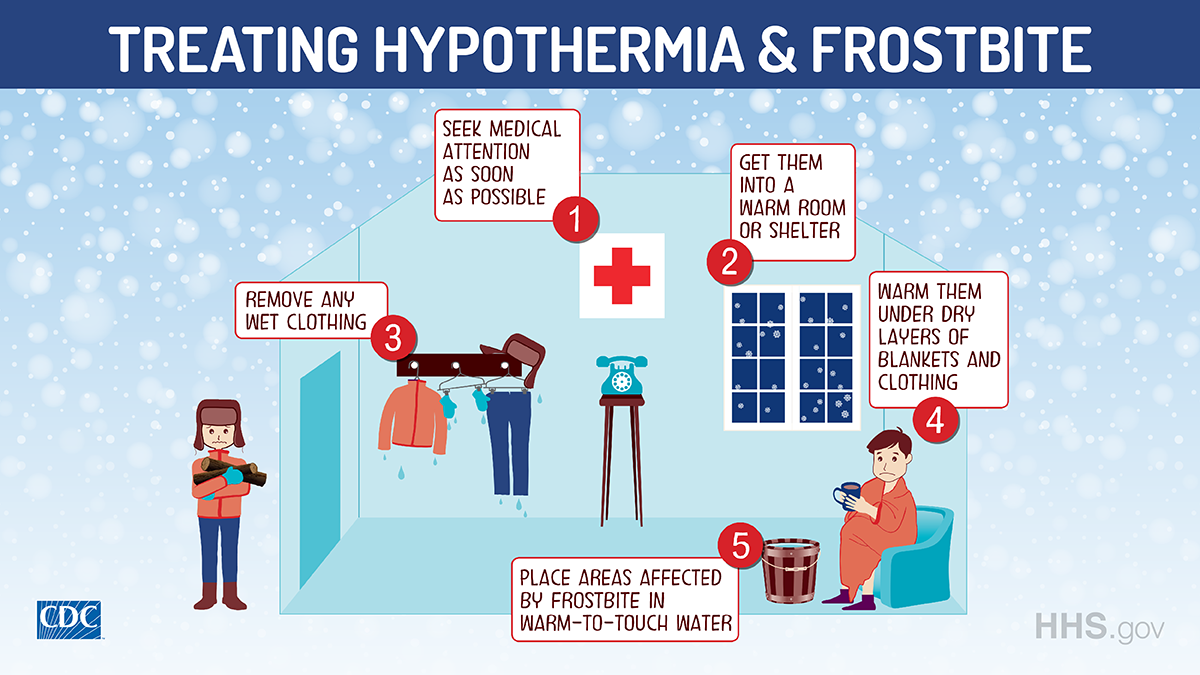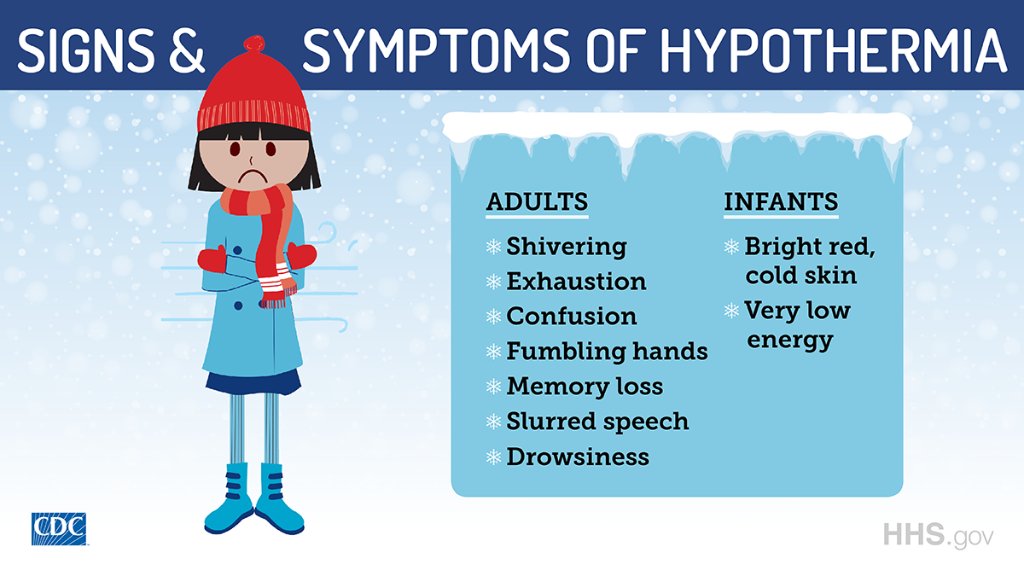Stay Safe in Winter Weather

An illustration of someone experiencing frostbite. The text says, “Spot Frostbite: A victim is often unaware of frostbite because frozen tissue is numb. Signs and symptoms: redness or pain in any skin area may be the first sign of frostbite. Other signs include: a white or grayish-yellow skin area; skin that feels unusually firm or waxy; numbness.” Another illustration shows someone experiencing hypothermia. The text says, “Spot Hypothermia: Hypothermia often occurs at very cold temperatures but can occur at cool temperatures (above 40°F), if a person is wet (from rain, sweat or cold water) and becomes chilled. Signs and symptoms for adults: shivering, exhaustion, confusion, fumbling hands, memory loss, slurred speech, drowsiness. Signs and symptoms for infants: bright, red, cold skin; very low energy.”
A graphic titled, “Treating Hypothermia & Frostbite” with illustrations showing various steps to take to treat these conditions. The text says, “Seek medical attention as soon as possible. Get them into a warm room or shelter. Remove any wet clothing. Warm them under dry layers of blankets and clothing. Place areas affected by frostbite in warm-to-touch water.”
Hypothermia: An illustration of someone experiencing hypothermia. The text says, “Signs & Symptoms of Hypothermia. Adults: shivering; exhaustion; confusion; fumbling hands; memory loss; slurred speech; drowsiness. Infants: bright, red, cold skin; very low energy.”
Frostbite: An illustration of someone experiencing frostbite. The text says, “Signs & Symptoms of Frostbite. Redness or pain in any skin area may be the first sign of frostbite. Other signs include: a white or grayish-yellow skin area; skin that feels unusually firm or waxy; numbness.”




